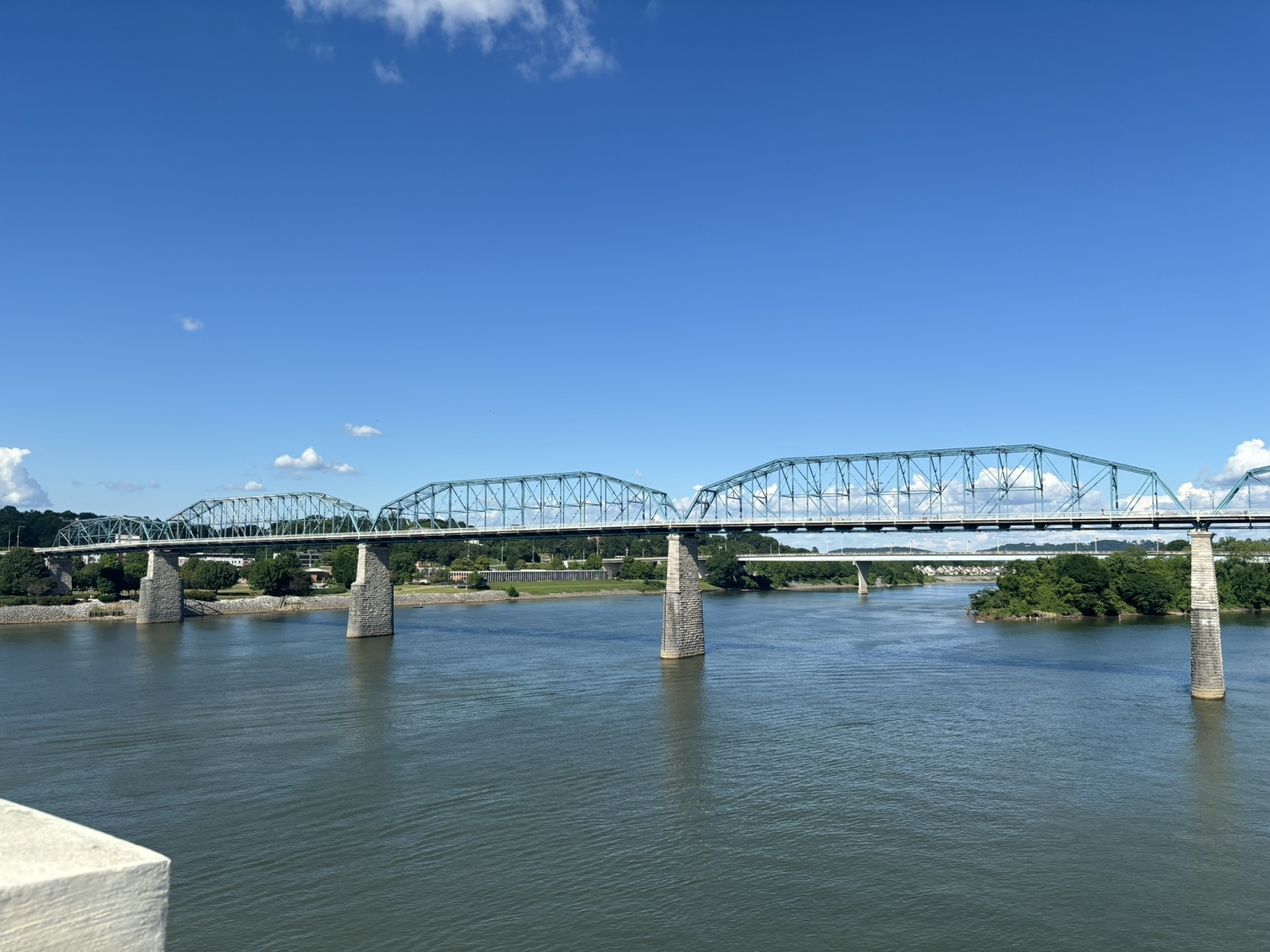
Walnut Street Bridge
NBI Information
Location
State: Tennessee
County: Hamilton County
Feature Carried: Pedestrian Path
Feature Crossed: Tennessee River
Latitude, Longitude: 35.0583, -85.3073
Structure Open, Posted, or Closed to Traffic: Open to Pedestrians
History
Year Built: 1891
Year Closed: 1978
Picture Date: December 10, 2020 and May 19, 2024
Geometry
Lanes on Structure: 1
Lanes under Structure: 0
Number of Main Spans: 1
Main Structure Type: Truss - Thru
Main Structure Material: Metal
Condition
Bridge is not on the National Bridge Inventory
Bridge Information
The Walnut Street Bridge was the first non-military highway bridge across the Tennessee River and is Tennessee’s oldest surviving non-military highway bridge. It was built in 1891, and is a six-span bridge Pennsylvania truss, which is one of the more complex truss types. The trusses vary in height based on the span length, and the top chords are configured in five sections to give the appearance of a Camelback truss. The bridge also has thirty-nine steel stringer approach spans. This bridge was constructed at a time when manufactures were switching from iron to steel, which resulted in the compression members being iron, and the tension members being steel.
The bridge was originally configured for horse-drawn wagons and pedestrians, so it was only built with 18.6 feet between the trusses, and 5.7-foot-wide sidewalks on either side. It was later configured to carry trolleys and vehicular traffic. As the population of Chattanooga grew, the bridge struggled to keep up with the demand, and had ongoing maintenance issues. The Chief John Ross Bridge was built in 1917 to alleviate the traffic, and the P.R. Olgiati Bridge was built in 1959.
The bridge was closed in 1978 due to the mounting repair costs. It was forgotten about and sat deteriorating as yet another reminder of the city's decaying downtown. By the late 1880’s there were plans to demolish the bridge, but the plans were put on hold due to a lack of funding. During this time, a community campaign was formed to save the bridge and turn it into a pedestrian bridge. The group of activists, civic leaders, and historic preservationists envisioned a vibrant lateral park that would connect Chattanooga’s south and northside and help propel a downtown renaissance. They raised over $10 million to renovate the bridge, and it was also partially funded by a U.S. Department of Transportation grant. They also nominated the bridge as a historic landmark, and it was added to the National Register of Historic Places on February 23, 1990.
The restored bridge opened as a pedestrian bridge in 1993. It has now become a highly visible landmark and is a symbol of the city.
The bridge underwent a minor rehabilitation from December of 2009 to May of 2010. This project replaced the bridges deteriorating asphalt deck with wood planking. The bridge will have a major rehabilitation done, with pre-construction beginning on October 31, 2024. The bridge is anticipated to be closed from March 2025 to September 2026. The project includes stripping and repainting the bridge, replacing the timber decking, upgrading the electrical wiring, and installing new lighting and security features. In order to maintain safe crossing of the river, at least one lane of the Veterans Memorial Bridge will be closed, with barriers to protect pedestrians and cyclists.
References
National Archives Catalog: https://catalog.archives.gov/id/135818625
Historic Bridges: https://historicbridges.org/bridges/browser/?bridgebrowser=tennessee/walnut/
Walnut Street Bridge: https://www.walnutstreetbridge.com/more-about-the-walnut-street-bridge
Tennessee River Valley: https://tennesseerivervalleygeotourism.org/entries/walnut-street-bridge-chattanooga-tenn/74f80b90-df4b-41d3-88d3-dfe30cf85b66
The Pulse: https://www.chattanoogapulse.com/local-news/political-news/city-awards-contract-for-walnut-street-bridge-revitalization/


















